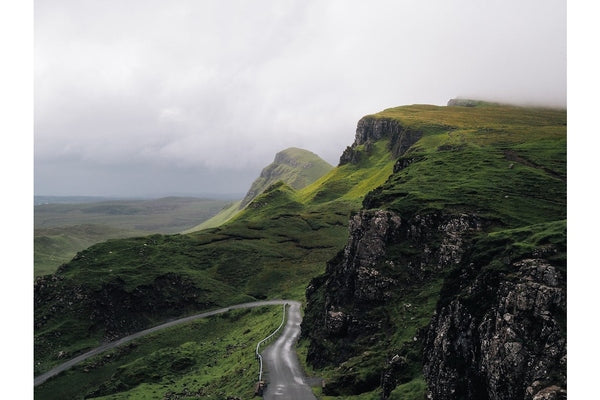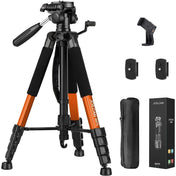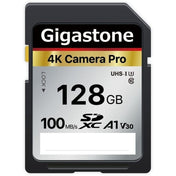Choosing the right camera lens can be a daunting task for both novice and experienced photographers. Wide-angle and telephoto lenses each offer unique advantages that cater to different photography styles. If you’re asking yourself, “What is the best lens for Nikon DX?” this guide will clarify the differences and help you choose the perfect lens for your photography needs. Narrowing down your options to wide-angle or telephoto lenses is the first step in enhancing your photographic journey.
What Is a Wide-Angle Lens?
A wide-angle lens boasts a short focal length, usually from 10mm to 35mm. This allows photographers to capture a broader field of view compared to standard lenses. A wide-angle lens is ideal for various photography genres, including landscape, architecture, and group photos.
Advantages of Using Wide-Angle Lenses
- Increased Depth of Field: Wide-angle lenses allow for more of the scene to be in focus, making them great for landscape photography.
- Capturing More Details: You can include more subject matter in the frame, which is perfect for tight spaces or when you want to capture a large group of people.
- Creative Perspectives: These lenses can create interesting distortions or perspectives, especially when used creatively.
Best Situations to Use a Wide-Angle Lens
Wide-angle lenses shine in various situations, such as:
- Landscape Photography: Capture sweeping vistas and expansive skies.
- Architectural Shots: Capture entire buildings in a single frame.
- Interiors: Make small spaces appear larger, which is advantageous in home photography.
What Is a Telephoto Lens?
Telephoto lenses have longer focal lengths, typically ranging from 70mm to over 300mm. These lenses allow you to magnify distant subjects and isolate them from their backgrounds, creating beautiful bokeh effects.
Advantages of Using Telephoto Lenses
- Depth Compression: Telephoto lenses compress space, making backgrounds appear closer to the subject, which is ideal for portraits.
- Selective Focus: These lenses allow you to blur backgrounds effectively, drawing attention to your subject.
- Magnifying Distant Subjects: Ideal for wildlife and sports photography, allowing you to capture details from a distance.
Best Situations to Use a Telephoto Lens
Telephoto lenses excel in the following scenarios:
- Sports Photography: Capture fast action from a distance without disturbing the event.
- Wildlife Photography: Get close-ups of animals without being intrusive.
- Portraiture: Create flattering images with beautiful background blur and depth.
The Key Differences Between Wide-Angle and Telephoto Lenses
Understanding the distinctions between wide-angle and telephoto lenses can help in determining the best lens for Nikon DX users. Here are the main differences:
Field of View
Wide-angle lenses have a much broader field of view, capturing more of the scene in a single shot. In contrast, telephoto lenses create a narrow field of view, focusing on specific subjects while excluding surrounding aspects.
Depth of Field
Wide-angle lenses generally provide more depth of field, which is beneficial for landscapes where you want everything in focus. Telephoto lenses typically produce a shallower depth of field, allowing for the subject to stand out beautifully against an out-of-focus background.
Size and Weight
Generally, wide-angle lenses are lighter and more compact than telephoto lenses. This portability makes them easier to carry for long periods, especially during hikes or trips. On the other hand, telephoto lenses can be bulky and heavy, requiring a more stable hand or tripod for the best results.
Understanding Focal Length
The focal length of a lens plays a pivotal role in how a photograph is captured, and it is essential in identifying the best lens for Nikon DX. Focal length is measured in millimeters (mm) and significantly impacts the angle of view and perspective of your images. Here’s a breakdown:
- Short Focal Length (Wide-Angle): As previously mentioned, wide-angle lenses have focal lengths below 35mm, offering a wider field of view.
- Standard Focal Length: Lenses with focal lengths from 35mm to 70mm serve as a good middle ground, providing a balanced perspective.
- Long Focal Length (Telephoto): Telephoto lenses with focal lengths above 70mm allow you to zoom in on faraway subjects.
Choosing the Right Lens for Your Style
Your choice between a wide-angle and a telephoto lens will depend on your intended photography style. Consider what subjects you plan to shoot most often:
If You Love Landscape Photography...
A wide-angle lens is your best bet. It enables you to capture scenic vistas and the vastness of nature. Plus, with a wide-angle lens, you can shoot at smaller apertures without excessive blurring.
If You Prefer Portrait Photography...
Opt for telephoto lenses. They help create flattering bokeh and isolate subjects effectively, making them pop against soft backgrounds.
If You’re a Wildlife or Sports Photographer...
Telephoto lenses will typically be your go-to. Capturing fast-moving subjects from a distance requires the magnification that these lenses offer.
Additional Considerations for Nikon DX Users
When selecting the best lens for Nikon DX cameras, it’s vital to consider the crop factor. Nikon DX sensors have a crop factor of 1.5x, impacting the effective focal lengths:
- Wide-Angle Lenses: A 10mm lens translates to an effective 15mm, making it suitable for expansive scenes.
- Telephoto Lenses: A 70mm lens effectively behaves like a 105mm lens, providing exceptional power to capture distant subjects.
Maintaining Your Lenses
Regardless of whether you choose a wide-angle or telephoto lens, proper maintenance is essential to prolong the life of your equipment. Here are some tips to keep your lenses in optimal shape:
- Keep Them Covered: Use lens caps when not in use to avoid dust and scratches.
- Using Filters: Consider using UV or clear filters to protect the front element of your lens.
- Regular Cleaning: Clean your lenses with a soft brush and microfiber cloth to maintain clarity.
Final Thoughts: Crafting Your Photography Journey
Choosing between a wide-angle and telephoto lens can significantly impact your photography journey. Understanding the advantages, applications, and characteristics of each lens type empowers you to make informed decisions tailored to your style and needs. As you grow in your photography, mastering the use of both types of lenses will lead to striking images that capture the world from uniquely different perspectives. So, whether you’re scaling mountains to photograph breathtaking landscapes or zooming in on a nesting bird, the best lens for Nikon DX can elevate your skills to new heights.











